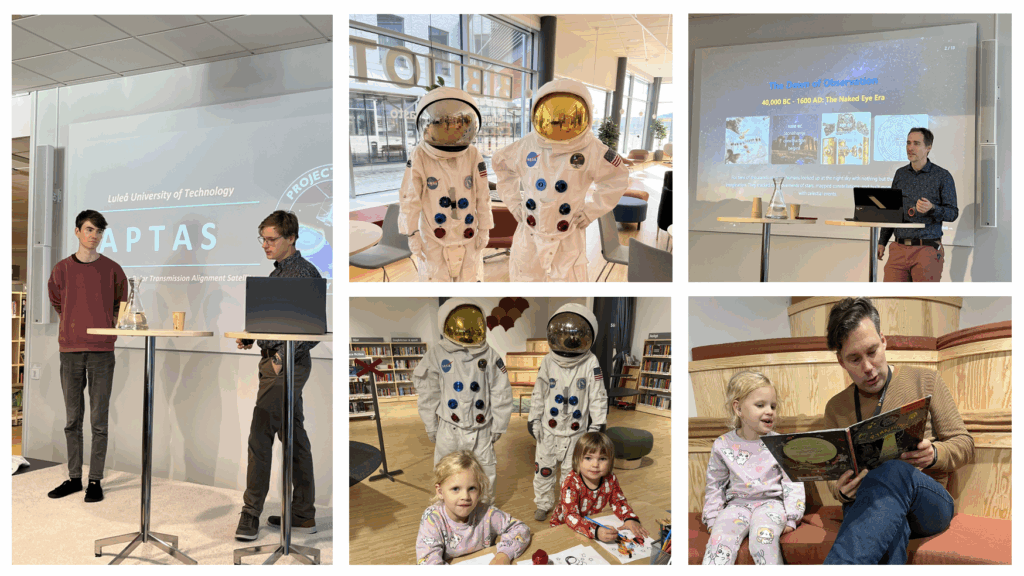During the week, visitors could explore everything from space art and philosophical discussions to innovative projects and technological solutions – with participants institutions ranging from schools to museums.
A key highlight was the active involvement of students from Luleå University of Technology. They presented their own space projects, showcased innovative technical solutions, and shared personal insights into what it is like to study space-related subjects at the university. These sessions gave the public unique access to the next generation of space experts and offered inspiration to future students.
“It is incredibly inspiring to see so many different parts of society come together – researchers, students, and the general public – and how this creates a dialogue that otherwise rarely takes place,” says Prof. Victoria Barabash, leader of the Service to Society UNIVERSEH work package that organized Kiruna Space Week.
Positive synergies for space
The programme also included exhibitions of children’s space books and readings, art workshops where children created their own space masterpieces, model experiments and demonstrations, as well as lectures on business development in space innovation. Events were held in libraries, cultural centres, schools, and at Kiruna Space Campus at Luleå University of Technology – ensuring that knowledge about space reached far beyond the walls of academia.
“The meeting between academic research, technological innovations, business, and the public is not only festive – it is also crucial for societal development. When researchers and students present their projects and the public have the chance to ask questions, curiosity and understanding are sparked, strengthening the ties between science, education, and societal needs,” says Victoria Barabash.
Space Innovation Forum
On the Space Week’s agenda was also Space Innovation Forum 2025, which this year focused on innovation, sustainability, and the future of space activities. The forum brought together policymakers, entrepreneurs, researchers, students, and industry representatives to discuss themes such as sustainable supply chains, 6G satellite communications, and open innovation. The first day highlighted strategic visions and networking while the second day, at Kiruna Space Campus, offered hands-on workshops, student innovation pitches, and technical deep dives.

